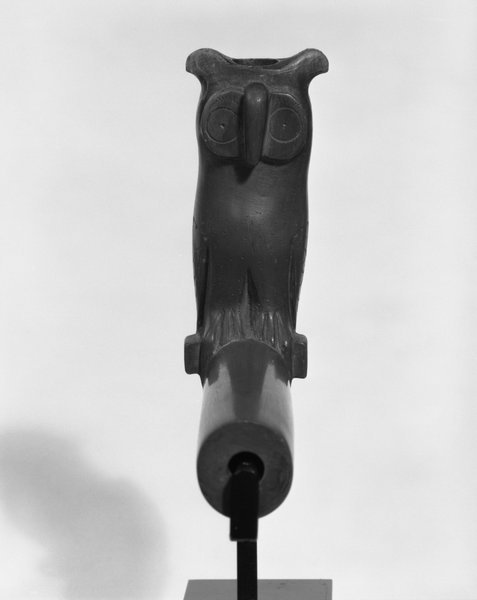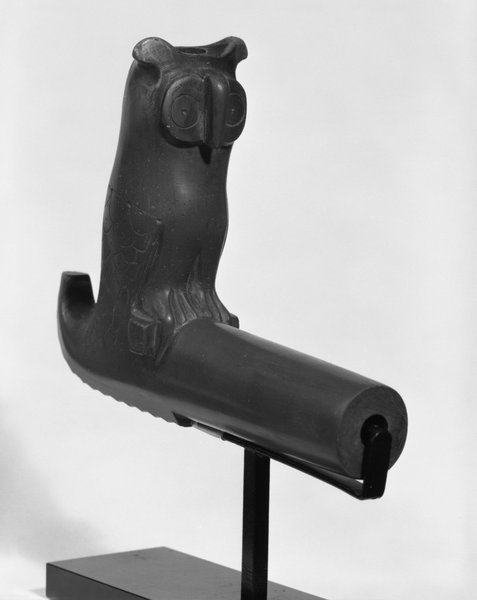Pipe Bowl representing Owl Item Number: 80.98.2 from the Brooklyn Museum


Description
Catlinite or pipestone pipe bowl carved in the form of an owl perched on a rectangular bar. Beak, tufts, eyes, and legs carved with details of eyes and feathers indicated by incised lines. The back of the bowl, under the bird, is carved with a serrated edge and turns up at the end as though that owl had a tail. The area around the opening in the owl's head is blackenedmining rights are for Native Americans.A pipe stem would be added to this bowl for smoking.Catlinite is only found in the Minnesota region in what is called Pipestaone National Parkk. Use of pipestone is restricted to Native Americans.
Label
These Native American objects represent just a few of the items made in the late nineteenth and the early twentieth century, primarily for sale to dealers and collectors to satisfy the growing market for indigenous products. Finely coiled baskets like the example by the Maidu weaver Mary Kea’a’ala Azbill were in great demand, as were Zuni Kachina dolls. The desire for Eskimo objects such as the ivory pipe engraved with a whale-hunting scene was accelerated by the Klondike Gold Rush in 1897. To appeal to non-Native patrons, Native artists invented new designs using trade materials such as the glass beads forming the embroidered floral arrangement on the northeastern puzzle bag (so named for the way its pieces fold together to keep it closed). Other artists used traditional materials but tailored designs to non-Native aesthetics, as seen in the porcupine-quill box. The Navajo quickly adapted to the Spanish introduction of silver coins and silver mining in the seventeenth century, embellishing their traditional wrist guards with hammered silver. Some artists retained both traditional materials and designs but produced greater quantities of popular items such as the Plains owl pipe bowl made from Catlinite (red pipestone).
Credit Line
Gift of Cynthia Hazen Polsky
Item History
- Made between 1900 and 1925
What
Who
- Culture
- Plains
Where
- Holding Institution
- Brooklyn Museum
When
- Creation Date
- between 1900 and 1925
Other
- Classification
- Ceremonial